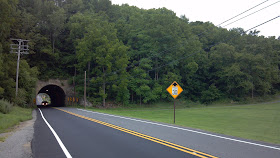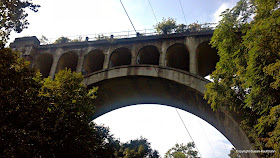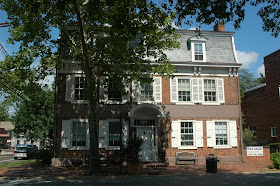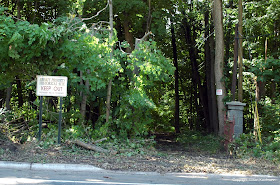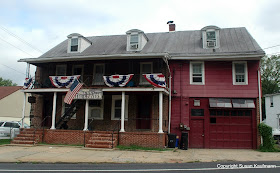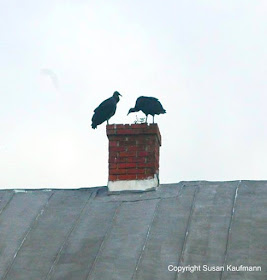Hancock House is more than a nearly-300-year-old house whose bricks are laid in interesting patterns. It was the site of a March 1778 massacre. When Ivan brought up the possibility of spending a day at the Delaware bayshore last weekend, I suggested that we make a visit to the Hancock. Maybe it would even be open this time.
Before we get into our trip, let's talk about the massacre. Just a few days earlier, the Americans had taken the surrounding area after the battle of Quinton Bridge, about 90 Continentals were quartered at the Hancock House. The home's owner, William Hancock, was a judge and a Tory, and he'd left the area once the American forces achieved dominance. However, he returned on March 20 and was quickly taken captive.
 All were asleep when a raiding party of 200 British soldiers attacked the house early the next morning. Many of the Americans were bayonetted in their sleep; others pled in vain to be taken prisoner. A precious few were able to escape, but ironically, Hancock himself was murdered by the loyalists with whom he agreed.
All were asleep when a raiding party of 200 British soldiers attacked the house early the next morning. Many of the Americans were bayonetted in their sleep; others pled in vain to be taken prisoner. A precious few were able to escape, but ironically, Hancock himself was murdered by the loyalists with whom he agreed.The house is now owned by the State of New Jersey and run by local volunteers. I'd actually stumbled upon the house being open on a March day many years ago, and found the guides to be very friendly and knowledgeable. In fact, before I left that day, they implored me to come back few weeks later for a reenactment. "You'll really like the massacre," they told me. "It's a lot of fun!"
We weren't as lucky with the latest visit, though I'd checked the website in advance for operating hours. A sign outside the house said the volunteer staff was at a street fair in Salem City, so no one was around to show us the interior. Even if you have the same luck we did, however, there's lots to see around the property. The site's interpreters probably realized that a fair number of visitors would happen by when no-one was there to tell the story, so they developed really good signage.
The house exterior is the logical first thing to check out, but it's not exactly obvious since it's on the side not facing a street. The patterned end brickwork contains both a zigzag pattern and the initials of the house's owners, William and Sarah Hancock, along with 1734, the year it was built. Overall, the architecture reflects the English/Quaker influence of the European settlers in that part of New Jersey. Salem County is second to only Burlington County in the country when it comes to the number of surviving brick houses with pattern designs.
Next, there's a Swedish plank cabin on the property. This building itself was built in 1931 by the Civil Works Administration with 400 year old cedar mined from property in Salem. All of the craftsmanship is authentic to the 1700s, meaning it would look very familiar to the Swedes who settled in the area during Colonial times. An informative wayside offers all the information you'd probably want to know about the cabin.
We also took a few minutes to check out the creek that meanders in front of the house. While there was no real wildlife to be seen, I don't doubt that the occasional muskrat makes its way through, along with various waterfowl. Yet another marker explains that PSE&G has been doing mitigation work to encourage the growth of water life in consideration for the operation of its nuclear plant a few miles away.
Satisfied we'd learned as much about Hancock House as we could expect that day, we set course for our next destination. We'd learned about a massacre that didn't occur in Boston... how about a tea party that didn't happen in Boston, either? Off we went, traversing the back roads to Greenwich.








